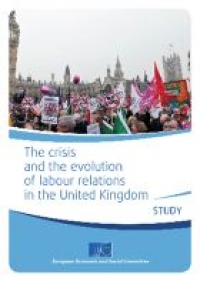The Crisis and The Evolution of Labour Relations in The United Kingdom
Thursday 06 October, 2016 Written by Euopean Economic & Socia Committee
Twenty-one months into deep recession a new and untried Coalition government chose deficit reduction and welfare-to-work as its main priorities, confronting the UK’s numerically weakened trade union movement in its public sector heartlands over pensions, pay and jobs.
The employers, more fragmented but by no means less powerful and influential than the unions, applauded the government’s deregulatory, flexible-labour-market stance and were relieved when peak unemployment fell short of their worst fears. However, despite impressive and continuing private sector employment growth (much of it into self-employed, temporary, part-time and zero-hours jobs) economic recovery remained painfully uncertain.
Productivity stagnated and there was an unprecedented fall in average real earnings although the feared "double dip" recession was avoided. Collective bargaining (covering 15-20% of the private sector) coupled with ongoing public sector pay curbs resulted in pay increases below their pre-recession trend, but was helped eventually by a sharp fall in consumer price inflation.
Pressure for higher wages found its voice in the spread of the Living Wage as well as through bargaining and industrial action, which continued at a reduced level. A new right-of-centre government elected in 2015 unveiled plans to further restrict the trade unions, while promising higher statutory minimum wages.
Please find this excellent report below:
Leave a comment
Make sure you enter all the required information, indicated by an asterisk (*). HTML code is not allowed.
Join
FREE
Here










